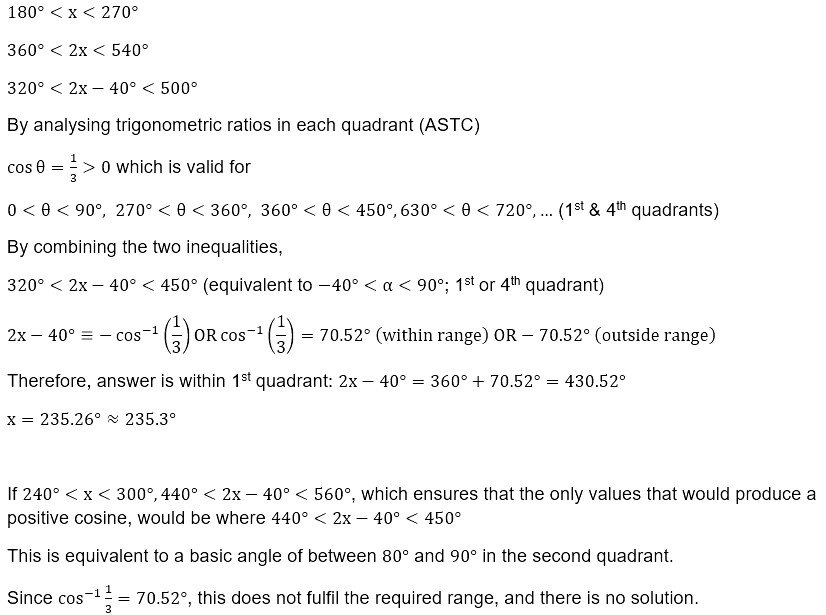Wee Yong Geng, Eldric's answer to dream's Secondary 3 A Maths Singapore question.
done
{{ upvoteCount }} Upvotes
clear
{{ downvoteCount * -1 }} Downvotes
This is a rather broken down solution to the equation which might be better understood with simplifying formulas, but is more relevant to helping you understand the idea of quadrants and their influence on the signs of trigo ratios.
Basically, what is important to know that within the range specified, the value of the cosine given (1/3) can only be achieved in the 1st and 4th quadrants (AstC), and by solving within these inequalities (when overlapped), the basic angle must be one that gives you an absolute cosine value of 1/3. Hence it is easier to simply correlate this to the typical angles of 0, 90, 180, 270, 360 in the basic first 4 quadrants to make your comparisons (Remember that adding or subtracting 360 from each angle will let you stay within the appropriate quadrants!)
Basically, what is important to know that within the range specified, the value of the cosine given (1/3) can only be achieved in the 1st and 4th quadrants (AstC), and by solving within these inequalities (when overlapped), the basic angle must be one that gives you an absolute cosine value of 1/3. Hence it is easier to simply correlate this to the typical angles of 0, 90, 180, 270, 360 in the basic first 4 quadrants to make your comparisons (Remember that adding or subtracting 360 from each angle will let you stay within the appropriate quadrants!)
Date Posted:
3 years ago


